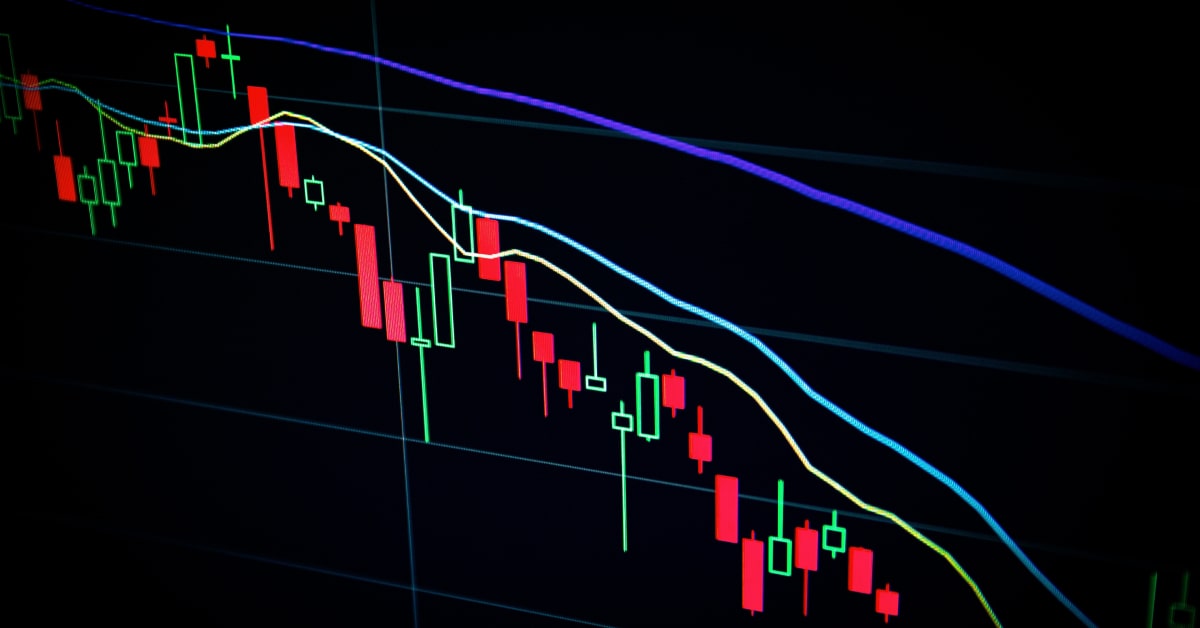Understanding Credit Risk in Short Term Trading
In short-term trading, credit risk is often associated with the likelihood of a significant loss due to the failure of an entity to honour its financial obligations.
When navigating the fast-paced world of short-term trading, numerous risks lurk around every corner, potentially impacting your success. One of the most crucial risks to grasp is credit risk, which refers to the possibility that a borrower won't fulfil their financial obligations and repay their debts. In the context of short-term trading, this risk translates to the likelihood of incurring substantial losses due to an entity's failure to honour its financial commitments.
While CFD traders have limited exposure to the issuer's credit risk, they face a heightened counterparty risk compared to traditional asset ownership. This is because they rely on the CFD provider to fulfil their obligations. Additionally, margin requirements amplify potential losses, further increasing dependence on the CFD provider's financial stability.
Mitigating these risks can be achieved by choosing a well-regulated and transparent provider with robust client money protection. This ensures that your funds are safeguarded and minimises your exposure to potential financial losses.
The credit risk in short term trading can be influenced by several factors, such as the financial health of the entity you're investing in, market conditions, and global economic trends. As such, it's essential to regularly monitor these factors and adjust your trading strategy accordingly.
The Role of Credit Risk in Forex Trading
Forex trading is another area where credit risk plays a significant role. In forex trading, you're dealing with currency pairs, and the credit risk is associated with the potential default of the counterparty. If the counterparty fails to honour their obligations, it could result in a significant loss for you.
In the forex market, credit risk is often associated with counterparty risk. This is the risk that the counterparty in a forex trade will not honour their obligations. For instance, if you're trading with a broker who fails to execute your trades as agreed, you could face a significant loss. Therefore, it's essential to choose your trading partners carefully to minimise this risk.
Despite the potential risks, forex trading offers numerous opportunities for traders. The market is highly liquid, meaning that you can quickly enter and exit trades. Additionally, forex trading allows you to leverage your position, thereby potentially increasing your profits. However, it's essential to understand that leverage also increases your potential losses, so it's crucial to manage your risk effectively.
Managing Credit Risk: Vital Tips for Traders
If you find that an entity has a high credit risk, it's often better to avoid investing in their bonds or lending them money.
Always have a risk management plan in place. This plan should outline your risk tolerance, trading goals, and strategies for managing potential risks. By having a clear plan, you can make informed decisions that align with your trading goals, thereby effectively managing your credit risk.

Liquidity Risk in Short Term Trading
Liquidity risk in short-term trading refers to the difficulty of quickly buying or selling an asset without significantly affecting its price. This can lead to significant losses if the market is illiquid.
Key Points:
- Forex Market: While generally highly liquid, specific currency pairs may be less liquid, making entering or exiting trades more challenging.
- Price Manipulation: In low-liquidity markets, large traders can manipulate prices by placing large orders, creating drastic fluctuations harmful to smaller traders.
- Double-Edged Sword: High liquidity in forex allows for easy entry and exit but also leads to rapid price movements and potential slippage, impacting profitability.
- Time-Varying Liquidity: Liquidity varies throughout the day, with peak activity during hours when multiple global markets are open.
- Trading Strategy Implications: Traders need to be aware of these factors and adjust their strategies accordingly.
Strategies to Mitigate Credit Risk in Short Term Trading
There are several strategies you can employ to mitigate credit risk in short term trading. One effective strategy is to regularly monitor market conditions and global economic trends. These factors can significantly impact credit risk, so it's essential to adjust your trading strategy accordingly. For instance, if market conditions are favourable, you may decide to take on more risk. Conversely, if market conditions are poor, you may choose to reduce your risk.
Lastly, always have a risk management plan in place. This plan should outline your risk tolerance, trading goals, and strategies for managing potential risks. By having a clear plan, you can make informed decisions and effectively manage your credit risk.
Conclusion
By understanding the various aspects of credit risk, you can make informed trading decisions. Additionally, by employing effective risk management strategies, such as regular market monitoring, you can minimise the potential impacts of credit risk on your trading. Remember, successful trading is not just about maximising profits, but also about effectively managing potential risks.
The material provided here has not been prepared in accordance with legal requirements designed to promote the independence of investment research and as such is considered to be a marketing communication. Whilst it is not subject to any prohibition on dealing ahead of the dissemination of investment research we will not seek to take any advantage before providing it to our clients.
Pepperstone doesn’t represent that the material provided here is accurate, current or complete, and therefore shouldn’t be relied upon as such. The information, whether from a third party or not, isn’t to be considered as a recommendation; or an offer to buy or sell; or the solicitation of an offer to buy or sell any security, financial product or instrument; or to participate in any particular trading strategy. It does not take into account readers’ financial situation or investment objectives. We advise any readers of this content to seek their own advice. Without the approval of Pepperstone, reproduction or redistribution of this information isn’t permitted.